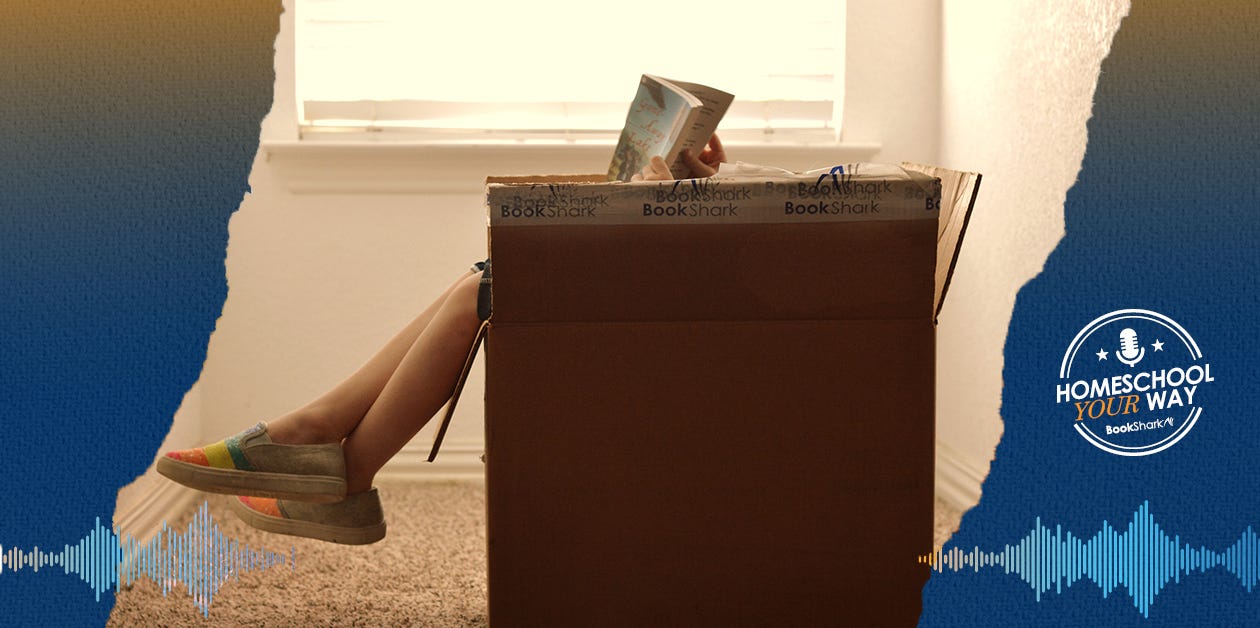Why I Don't Try to Homeschool for Free
-
 By
Megan Zechman
By
Megan Zechman
- Mar 4, 2022

Over the past few years, I’ve noticed a movement in the homeschooling community that has gained a lot of momentum — the school for free method of homeschooling. This approach to curriculum means families school their children at home as inexpensively or as close to free as they can.
Now I’m not against free stuff. We can all use help stretching our hard earned dollars, especially homeschoolers who often rely on one income. In fact, since 2001, my family has relied solely on my husband’s income, and I understand the pinch that happens to a family's finances when mom stays home to take the role of teacher.
I get it. I really do. Homeschooling can be expensive. We all have to make wise purchasing decisions, but that doesn’t equal trying to do it all for free, especially if you have older students.
Nor am I talking about using the occasional printable. I use free downloads myself and, in fact, offer them to my readers. The difference is that I’m not trying to replace a subject’s curriculum with freebies that I grab here and there. Instead, I use them as supplements to round out and complement specific lesson plans.
So, if I understand the need to be frugal and I use free printables, why don’t I try to homeschool for free?
Free Isn’t Always Free
I know. This doesn’t make sense, right? You’re probably saying, “What? Of course it is. I didn’t pay anything, so it’s free.” I want to challenge you on this point.
Searching for, storing, and downloading these freebies take time and energy—two things that are very important to me and that I never have enough of.
Downloading everything that looks interesting quickly leads to clutter. Sure, it’s digital clutter, so it’s easy to push aside, but it’s still clutter. When you want to use a product you’ve saved (often years later), you have to search through dozens of files to find what you’re looking for which takes up more of your valuable time. Adding to the clutter factor is the fact that many freebies require an email sign up which typically equates to unwanted messages in your inbox.
Plus, printing these freebies costs real money in toner, paper, and electricity.
Are You the Customer or the Product?
There's a saying that pertains to homeschooling for free: "If you're getting something for free, you aren't the customer. You are the product."
For example, Pinterest is free to use. But why? It's free because your attention is the product that vendors and bloggers are seeking to gain and sometimes even pay to get via ads.
Why do free game sites have tons of ads on them? You get the game for free, yes, but you pay by seeing ads. Typically a paid service is ad-free.
That game site or printable provider may not have your child's educational interests foremost in their priorities. Instead, their goal is more traffic, more clicks, more eyes, more subscribers. When you pay for a product, you are more assured that the product can stand on its own feet and isn't merely a gimmick for traffic and clicks.
Free Downloads Aren’t a Good Substitute for Curriculum
 Let’s say you grab a free notebooking study for the 13 American Colonies. Can that be used as a full early American History curriculum? Chances are, the answer is no. It was likely created to be an add-on for any history curriculum and needs to be rounded out with hands-on activities, books, videos, field trips, etc.
Let’s say you grab a free notebooking study for the 13 American Colonies. Can that be used as a full early American History curriculum? Chances are, the answer is no. It was likely created to be an add-on for any history curriculum and needs to be rounded out with hands-on activities, books, videos, field trips, etc.
Plus, attempting to piece together a subject entirely from freebies you happen to find online is extremely challenging. Although all students emerge from high school with learning gaps, piecing together a curriculum from freebies means that you are missing a consistent and comprehensive plan that curriculum creators lay out for you.
The quality and accuracy of freebies vary greatly, and who can you complain to about sub-par materials? It was free! You get what you pay for, right? So when you download something free, you have the added burden of making sure the material is something you truly want to use with your kids.
An Education is a Worthy Investment
My children’s schooling is worth a spot in my family’s budget. Of course I don’t have to spend the kind of money that schools do to educate a student, but I want my children to know that I value them and their education.
That doesn’t mean that I go crazy and buy everything I see. I have a homeschooling budget and I work within it. I spend money where it’s needed and where it makes sense for our family—often in quality art supplies, living books, games, field trips, and high quality curriculum that builds our home library.
All of that being said, am I really against freebies in homeschooling? No, not at all. But my advice is to be smart about it. Download things that you know you will use and incorporate into a lesson plan instead of letting them sit, unused on your hard drive. Consider them tools that can make subjects fuller and richer. Look at them with the same critical eye you would use with published curriculum.
As BookShark mom Liz Rooney said on Facebook, "I feel like the prevailing attitude among homeschoolers is that if it isn’t free, you paid too much. Meanwhile, I’m over here congratulating myself on the quality curriculum I bought and which saved me countless hours creating something from scratch. (Once they get to middle and high school, those freebie worksheets just ain’t gonna cut it)."
Although the homeschooling for free attitude is one homeschool movement I won’t be joining, homeschooling is about personal preference. No matter what you spend to educate your kids, we’re all fortunate to be able to do what’s best for our own family.
About the Author
Megan Zechman is a veteran homeschool mom of two girls. Over at Education Possible, she shares creative, hands-on learning activities for middle school.










